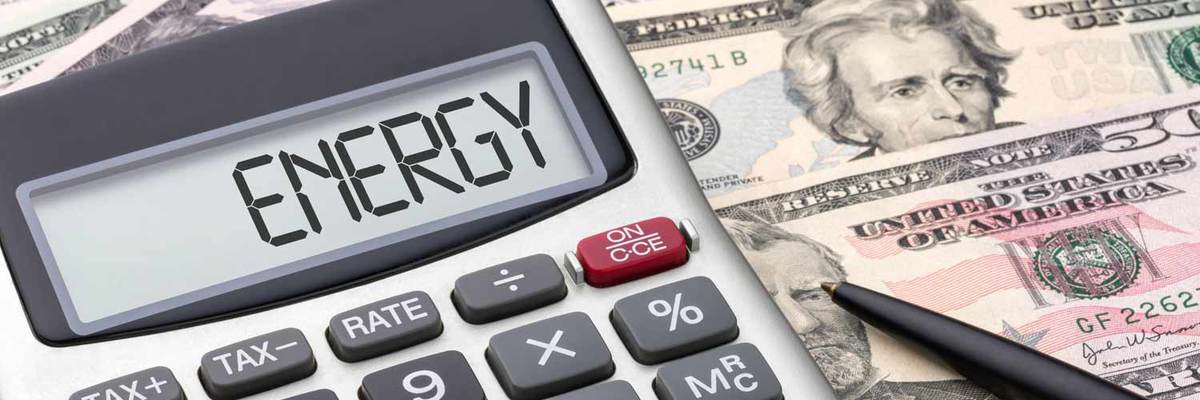How to Lower Energy Bills with These Helpful Tips


It’s out there waiting for you, and no matter what you do, you’ll have to deal with it.
It’s your energy bill, and each month it seems to be getting bigger and bigger, leaving you to wonder, “why is my energy bill so high?”
There are a few reasons why it’s so high, so what can you do to get a lower energy bill?
Our mission here at RetroFoam is to make homes more energy efficient with our injection foam insulation. On top of creating an air seal in your home, we know a few other ways to knock those bills down a few pegs.
From switching lightbulbs to adding insulation, here are a few ways you can lower your energy bill.
How to Lower Your Energy Bill
Are high energy bills cramping your style?
A few adjustments around your home can make a difference when you’re looking to lower monthly energy bills.
Use a Programmable Thermostat
A programmable thermostat can make a real difference when you’re trying to reduce your energy usage.
Setting the thermostat just 7 to 10 degrees lower in the winter or higher in the summer can save you as much as 10 percent on your heating and cooling costs, according to the U.S. Department of Energy.
The Department of Energy recommends setting your thermostat at 68 degrees in the winter months when you’re at your home and awake. When you’re asleep or gone, the DOE recommends setting it lower.
In the summer months, setting your thermostat at 78 degrees when you’re home is another way to cut costs.
Getting a programmable thermostat for your home can make setting these temperatures a lot easier. This way, you can schedule and set those temperatures without the hassle of trying to remember to do it.
Lower the Temperature on Your Water Heater
The water heater in your home is just one of the appliances that can hit you right in the wallet.
This is because the heater is storing water while also keeping it warm.
There is nothing more relaxing than a steaming hot shower, but turning down the temperature just a few degrees can really impact your monthly energy bill. The ideal temperature to set your water heater to is 120 degrees.
Another helpful tip that can help reduce your energy usage is to shut your water heater off if you leave on vacation or will be gone for an extended period of time.
Don't Leave Electronics on Standby
Much like a vampire lurking in the shadows waiting to suck out your life force, your electronics left on standby are sucking up all of your electricity.
Sure, that is a little dramatic, but your gaming console, tablet, computer, and other devices you’re not shutting off use energy. Even when they’re sleeping, they’re still siphoning electricity.
While in sleep mode, these devices are updating and downloading content. The DOE explains that more than 10 percent of your monthly energy bill can be linked directly to these energy vampires.
Wash Clothes in Cold Water
The amount of energy used to wash your clothes can be pretty substantial.
Adjusting the temperature when you do a load of laundry can actually help reduce the amount of energy you use. Your water heater has to work pretty hard to supply your washing machine with hot water, so doing the laundry with cold water instead uses considerably less energy.
Switch Light Bulbs and Appliances to Energy-Efficient Models
About one-third of the electricity you use is for lighting in your home.
Switching to energy-efficient light bulbs, like CFLs and LEDs, can save you between $30 to $75 on your monthly energy bills. These energy-efficient bulbs also last between 10 to 25 times longer than a standard incandescent bulb.
Your appliances, like your dishwasher, refrigerator, oven, and washer and dryer, account for about 13 percent of your monthly utility bill.
Switching to Energy Star-rated appliances will also help make your home more energy-efficient and save you even more money.
Clean Your Appliances to Make Them More Efficient
Even if you switch to Energy Star-rated appliances, if you don’t run them efficiently and keep them clean, they could just end up costing you money.
All of us forget to clean the lint filter or change out air filters, but if you want your appliances to run efficiently and lower monthly bills, this regular maintenance needs to be done.
Remember: You Can't Control the Weather
Unless you’re a mad scientist with a special machine, you can’t control the weather.
This is one of the elements of your monthly energy bill that you literally have no control over. About half of your monthly bills are directly related to your heating and cooling costs.
If you live somewhere and you’re in the middle of an extreme heatwave, there’s not a whole lot you can do. The same is true if you’re stuck in a cold snap.
The best advice is to set your thermostat to 78 degrees in the summer and 68 degrees in the winter and try to dress for whatever Mother Nature throws at you.
Seal Leaks Around Your Doors and Windows
The tiny space around your windows and doors can be a major source of air leakage that costs you money.
Sealing those tiny gaps with canned spray foam from your local hardware store can be a simple DIY project. Just remove the frame around the window or door, remove any old insulation that could be in there, spray the canned foam, and replace the frame.
Voila! Now you have an air seal around your windows and doors.
Make Your Home More Energy Efficient with RetroFoam
Creating a home that is more energy-efficient will help reduce those monthly bills.
Updating your insulation is vital, especially if you’re experiencing comfort issues along with those high energy bills. RetroFoam in your existing walls can help lower your energy bill with the air seal it creates.
RetroFoam is an injection foam insulation used specifically in existing enclosed walls. This material is environmentally friendly and creates an air seal that stops uncomfortable rooms and high energy bills. Insulating your existing walls with RetroFoam insulation can save you up to 50 percent depending on factors like your lifestyle and appliances in your home.
The installation of RetroFoam insulation is super convenient, as it can be done from the outside without the need to tear down your drywall. You can find a local RetroFoam dealer in your area using our Dealer Finder.
If you want to learn more about the other benefits of injection foam insulation, check out the Learning Center on our website.
Related Articles
Ten Home Problems That May Warrant Adding RetroFoam Insulation to Exterior Walls
How Much Can RetroFoam Insulation Help Me Save on Energy Bills?
Insulating One Problem Wall with RetroFoam: Will it Make a Difference?
About Amanda Emery
Amanda previously has worked as a breaking news and crime reporter, TV news producer, and editor. As a journalist, she has won several awards from The Society of Professional Journalists - Detroit Chapter and the Michigan Press Association. Amanda uses her experience as a journalist to write content that will help educate homeowners on foam insulation benefits. When Amanda isn’t writing, she’s spending time with her husband Chris, daughter Lilith-Maeve, and rescued huskies Danger and Wendigo. She also loves knitting, making art, and cooking.



